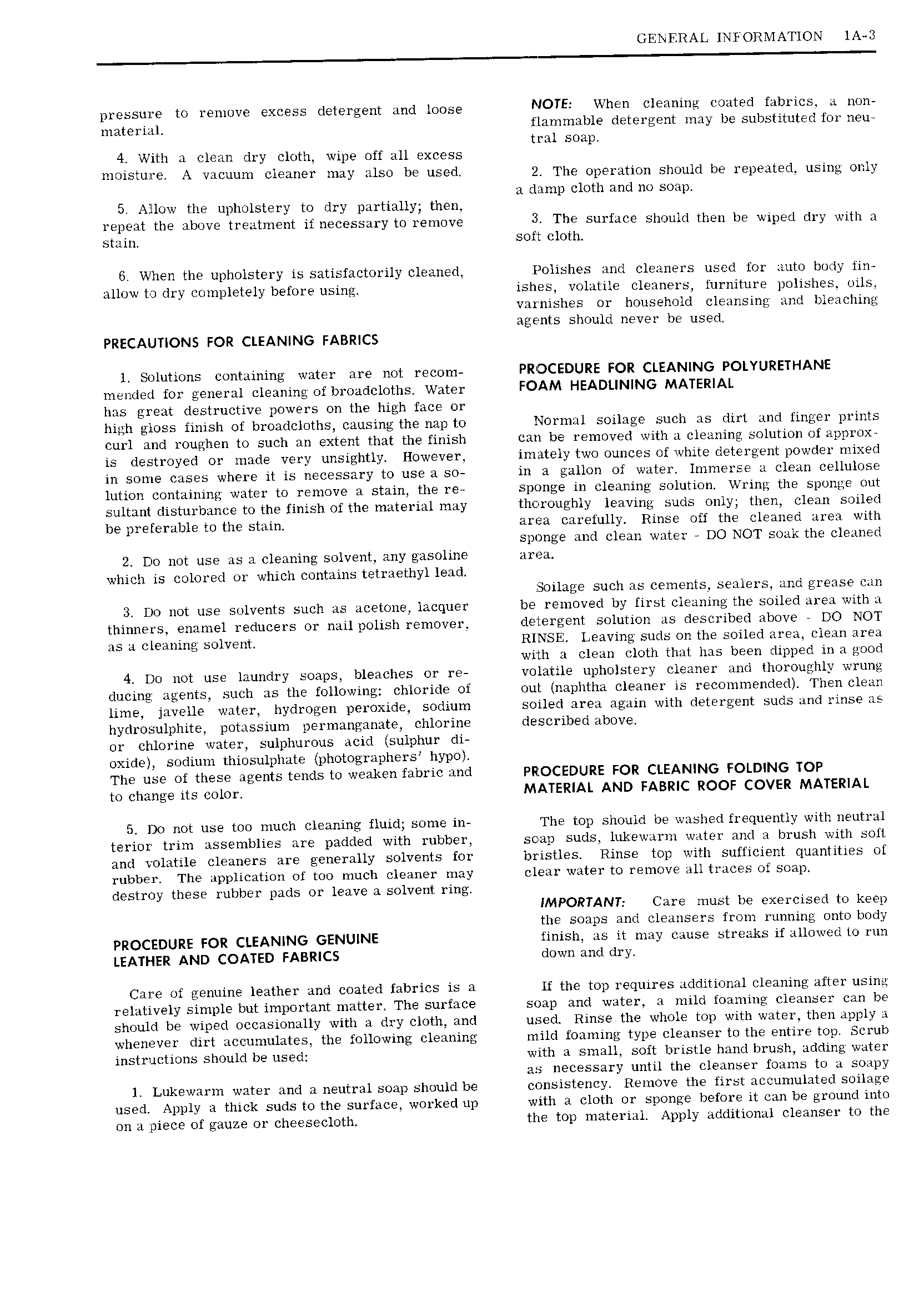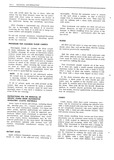Jeep Parts Wiki | Ford Parts Wiki
Home | Search | Browse
|
Body Service Manual August 1964 |
|
Prev

 Next
Next
GENERAL INI ORl IATION lA 3 pressure te remeve excess detergent and loose NOTE When cleaning coated fabrics a non mg t y flammable detergent may be substituted for neur tral soap 4 With a clean dry cloth wipe off all excess moisture A vacuum cleaner may also be used 2 The operation should be repeated using only a damp cloth and no soap 5 Allow the upholstery to dry partially then repeat the above treatment if necessary to remove 3 The u f iC SIWUICI UNH IJ Wii1 I CIYY with H stain soft cloth 6 When the upholstery is satisfactorily cleaned Polishes and cleaners used for auto body tin allow to dry completely before using ishes volatile cleaners furniture polishes oils varnishes or household cleansing and bleaching agents should never be used PRECAUTIONS FOR CLEANING FABRICS 1 Solutions containing water are not recom PROCEDURE FOR CLEANING POLYURETHANE mended for general cleaning of broadcloths Water FOAM HEADLINING MATERIAL has great destructive powers on the high face or high gloss finish of broadcloths causing the nap to Normal soilage such as dirt and finger prints curl and roughen to such an extent that the finish can be removed with a cleaning solution of approx is destroyed or made very unsightly However iinately two ounces of white detergent powder mixed in some cases where it is necessary to use a so in a gallon of water lmmerse a clean cellulose lution containing water to remove a stain the re sponge in cleaning solution Wring the sponge out sultant disturbance to the finish of the material may thoroughly leaving suds only then clean soiled be preferable to the stain area carefully Rinse off the cleaned area with sponge and clean water DO NOT soak the cleaned 2 Do not use as a cleaning solvent any gasoline area which is colored or which contains tetraethyl lead Soilage such as cements sealers and grease can 3 Do not use solvents such as acetone lacquer be removed by first cleaning the soiled area with a thinners enamel reducers or nail polish remover detergent solution as described above A DO NOT as a cleaning solvent RINSE Leaving suds on the soiled area clean area with a clean cloth that has been dipped in a good 4 Do not use laundry soaps bleaches or re volatile upholstery cleaner and thoroughly wrung ducing agents such as the following chloride of out naphtha cleaner is recommended Then clean lime javelle water hydrogen peroxide sodium soiled area again with detergent suds and rinse as hydrosulphite potassium permanganate chlorine described above or chlorine water sulphurous acid sulphur di oxide sodium thiosulphate tphotograpliersf hypo The use of these agents tends to weaken fabric and PROCEDURE FOR CLEANING FOLDING TOP to change its color MATERIAL AND FABRIC ROOF COVER MATERIAL 5 Do not use too much cleaning fluid some in The top should be washed frequently with neutral terior trim assemblies are padded with rubber soap suds lukewarm water and a brush with soil and volatile cleaners are generally solvents for bristles Rinse top with sufficient quantities of rubber The application of too much cleaner may clear water to remove all traces of soap destroy these rubber pads or leave a solvent ring IMPORTANT Care must be exercised to keep the soaps and cleansers from running onto body PROCEDURE FOR CLEANING GENUINE finish as it may cause streaks if allowed to run LEATHER AND COATED FABRICS down and dry Care of genuine leather and coated fabrics is a If the top requires additional cleaning after using relatively simple but important matter The surface soap and water a mild foaming cleanser can be should be wiped occasionally with a dry cloth and used Rinse the whole top with water then apply 1 whenever dirt accumulates the following cleaning mild foaming type cleanser to the entire top Scrub instructions should be used with a small soft bristle hand brush adding water as necessary until the cleanser foams to a soapy 1 Lukewarm water and a neutral soap should be consistency Remove the first accumulated soilage used Apply a thick suds to the surface worked up with a cloth or sponge before it can be ground into on a piece of gauze or cheesecloth the top material Apply additional cleanser to the

 Next
Next